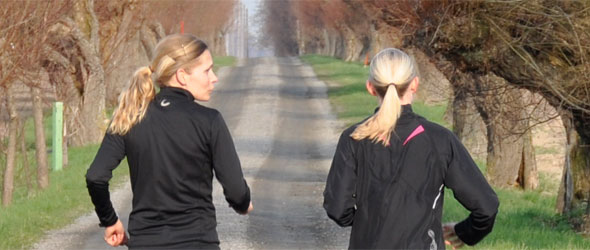State of the Sport Part I: Growth of Women’s Running
Women’s Running Apparel and Shoes
With the surge in women’s running, both athletic shoe and large apparel manufacturing companies have shifted their marketing efforts in order to meet demand, and new companies have emerged to fulfill a growing need. These companies have found strategic ways to attract their growing target demographic: female runners. With women seeking both performance and style, manufacturers have specifically designed running apparel and gear for the woman’s body including running skirts, female-fit tanks/shirts, running bras, tights, capris and shoes all in vibrant colors.
Early in women’s running, there was no such category as women’s running apparel. In fact, it wasn’t until the late 1970s that the running bra was invented, based on the prototype of two male jockstraps being sewn together. The idea was to provide women with more support and less chafing during their runs (this product was initially called the “jockbra”, and later, earned the official name Jogbra).
Nike, a leader in product innovation, has been part of this trend. In the mid-1980s, Nike developed a women’s “last” for their women’s shoe line. Prior to this time, any female looking for a running shoe had to purchase a men’s shoe in a smaller size. But the shoe lasts used for men’s running shoes weren’t effective at addressing the biomechanical and anatomical differences for women, such as the ratio of heel-to-forefoot, arch support and the pronation pattern due to hip alignment. Most running shoe companies today offer a full line of women’s running shoes that provide cushioning and stability specifically for the needs of female runners.
According to Running USA’s 2012 Women’s National Runner Survey, 65% of the female respondents spent more than $90 on running shoes last year and 80% spent $100 or greater on running apparel in the last 12 months. In both cases, these female core runners were more apt to buy from the local running store.
this article continues on from – 2012 State of the Sport – Part I: Growth of Women’s Running and is followed by – Why She Runs

























